Source: Alpha Community
Author: Xu Siqing
Last Thursday, a batch of large language models such as Baidu Wenxin Yiyuan and Xunfei Xinghuo Da Model were officially approved to provide services. AI has triggered a change in the paradigm of artificial intelligence, and naturally, people ask - in the paradigm shift, where is the money? Who are the main players?
In addition to the legend of MidJourney (11 individuals' income reached 100 million US dollars in 2022), entrepreneurs and investors have always harbored hope, expecting to explore the business models brought by AIGC (Generative Artificial Intelligence). This article attempts to analyze the opportunities for entrepreneurship and investment from the perspective of large models, and incidentally tells a "misguided entrepreneurial story" at the end.

Figure 1: Example of Wensheng illustration - Cyberpunk-style female assassin in the rain (This image was generated by HiDream's Pixeling V1.0).
LLM (Large Language Model) - Big companies burn money to build ecosystems, a trap for entrepreneurs
Let's take a look at the architecture of large language model applications (see the figure below). It is not difficult to see that the bottom layer is built on a solid hardware foundation, currently represented by GPU manufacturers such as NVIDIA and computing power providers such as CoreWeave. Like mobile phones, hardware is always the hard truth in commercialization, which is one of the business opportunities, but there are not many opportunities for entrepreneurs and investors, except for optimizing computing platforms for large models.
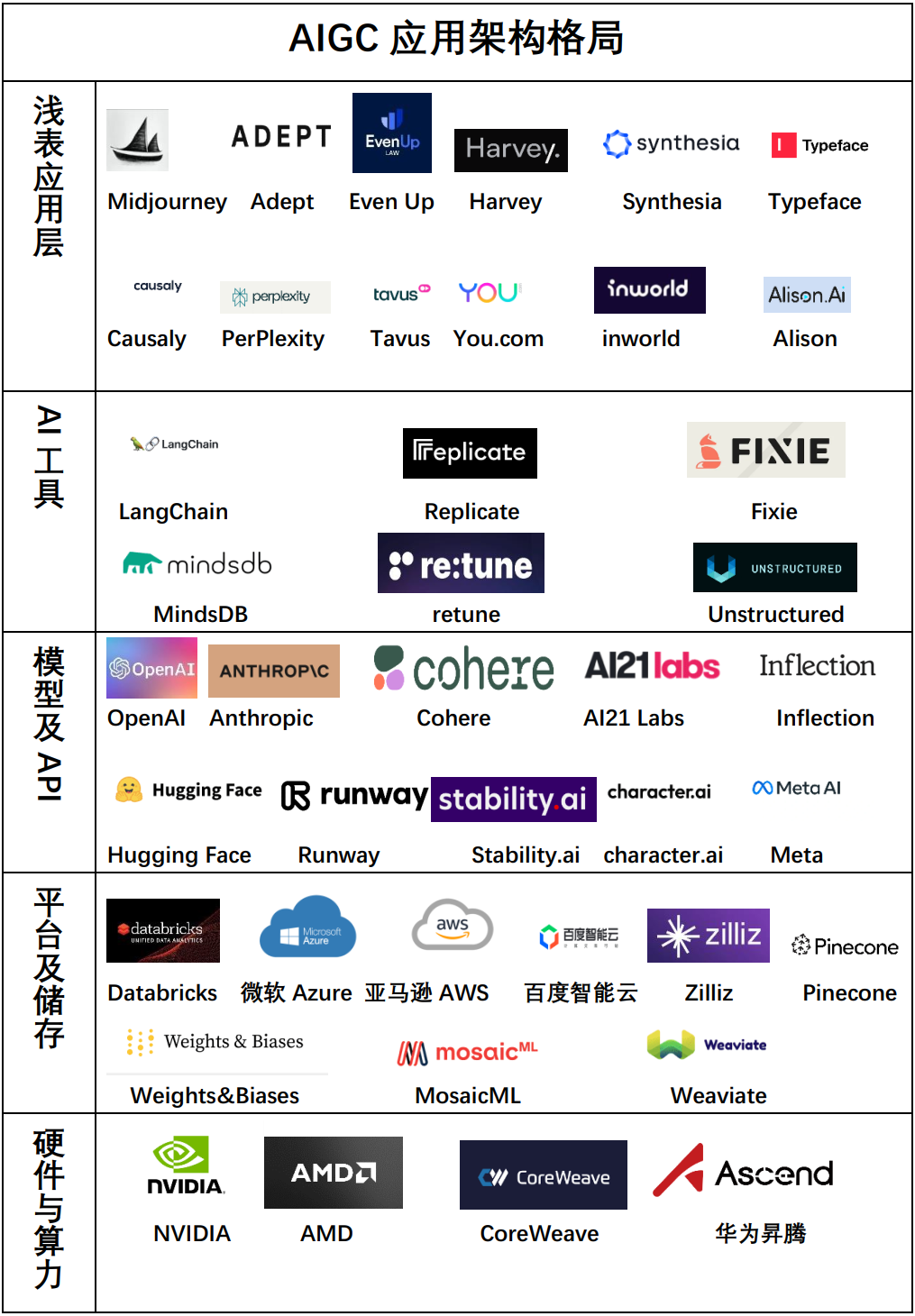
Figure 2: Structure of large language models and some representative companies
Across the ocean, mainstream large models are still few in number. Big companies such as OpenAI, Meta, and Google have started to lay out based on large models, and there are also LLMs founded by the authors of the transformer (Adept, Cohere, Character.ai), which tend to be differentiated rather than homogeneous.
We can see more of the ecological battle of the big companies - without their own large models, there is no future. People are more optimistic about Microsoft than Amazon because it has taken the lead in OpenAI and Meta Llama 2 large models, embracing AI in all its products. He who has the model has the world. With the foundation platform built by large models, applications are built on top of the platform, and it is like cutting off the enemy's supply line to snatch customers from Amazon.
The basic large model is a huge money-eating monster. Big companies have trained to encircle and suppress, and it is cost-effective. Except for niche models, small companies have almost no chance, so entrepreneurs should be cautious.
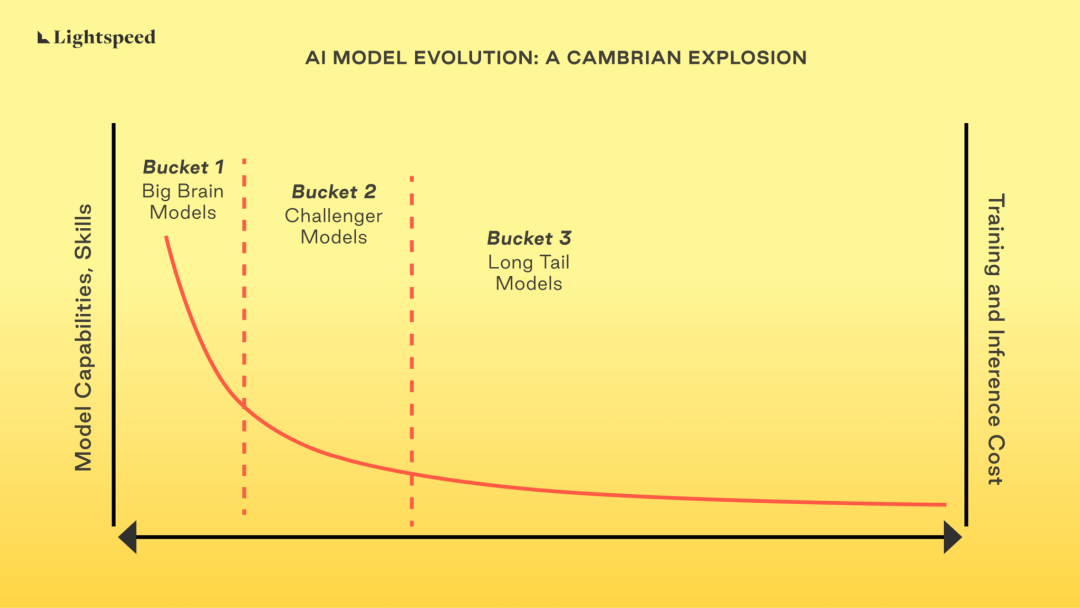
Figure 3: Evolution of AI models (Source: www.lightspeed.com)
OpenAI and big company models belong to the first wave, the large models of the transformer authors belong to the second wave, and the various models that continue to emerge, whether trained on their own or using open source models, should belong to the third wave. The development trend of large language models is from basic large models to niche models, and then to long-tail models mainly for enterprise applications.
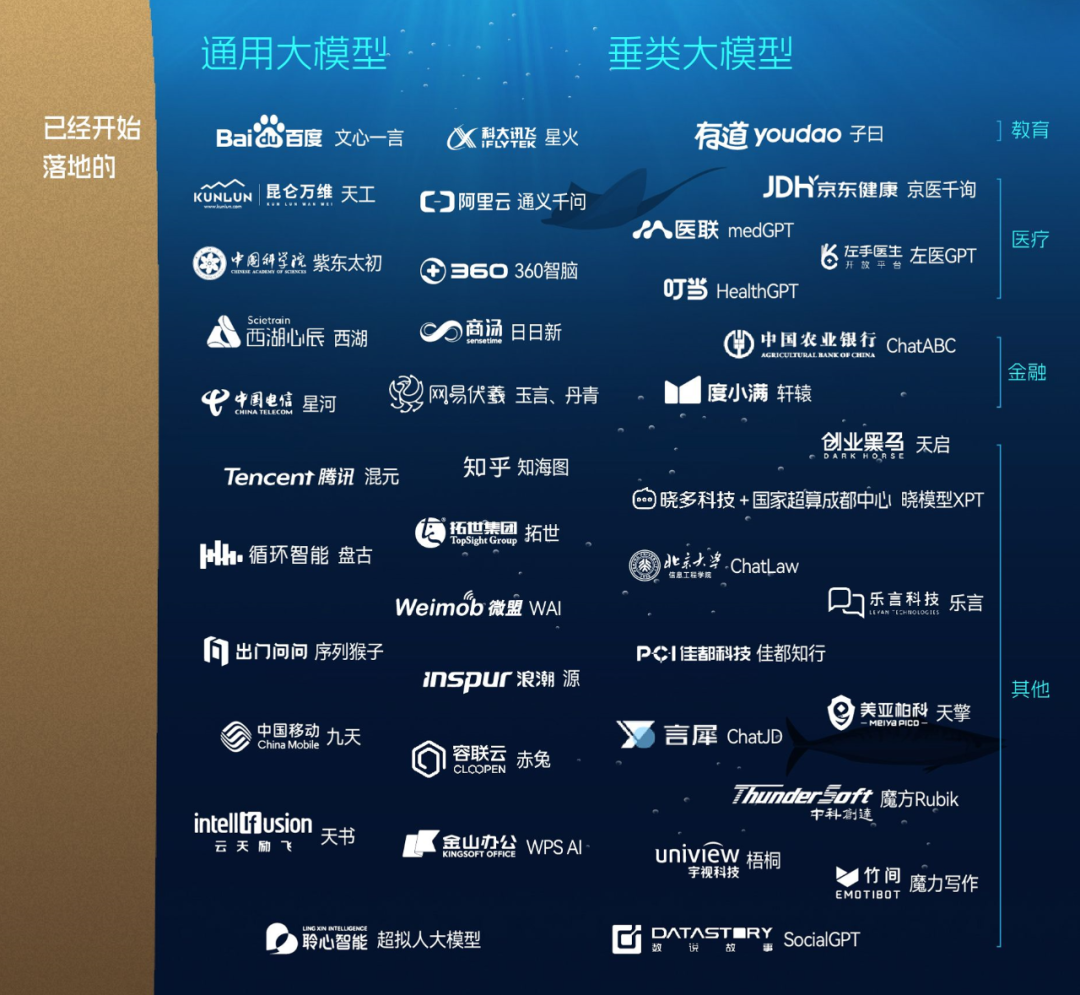
Figure 4: Overview of Chinese LLMs (Image source: the internet)
It should be noted that the proliferation of LLMs in China generally comes from open source models, except for a few big companies. We have reason to speculate that most of them are models trained using open source models (without a sufficient amount of GPUs, how can they do the job?), which belong to model reconstruction, saving almost 99% of the computing power required for pre-training (refer to the Alpha Community article: Meta Large Language Model Llama 2 - Upsetting the Table, Opening a New Chapter | Investors Say). It is commendable to be fast and cost-effective, but most of them belong to niche models or first-party large models, not truly basic large models.
Training basic large models requires a lot of capital and manpower, costing tens of millions of dollars, which is a game for the wealthy, so entrepreneurs should be cautious.
The reason is simple. When we compare the amount of money raised by a startup with similar startups abroad, the amount raised is about 1/10, which is not enough to train models. If you really start pre-training from scratch, the GPU will quickly consume all the money raised.
AI Tools - Selling picks in the gold rush, high technical content
Generative artificial intelligence has created a wealth of opportunities for new tools while establishing a new paradigm. These tools, from evaluating models, running and maintaining models, enhancing systems to operating tools, are all new opportunities brought about by the paradigm shift.
Especially noteworthy are tools for managing and training various types of data, as well as security protection systems. Security tools include traditional security tools as well as security and compliance tools for models. Imagine losing data is already terrifying, but if the trained model is invaded, it would be an efficient tool for invading one's own privacy.
Security should actually be not just a tool, but an indispensable infrastructure.
With a variety of tools, old tools are not useful, and entrepreneurs have many opportunities to shine.
New AI Applications - A flourishing paradise
There are many entrepreneurial opportunities at the application layer.
Whether it is a toB application or a toC application, the new paradigm created by the new generation of artificial intelligence provides endless opportunities.
ToC is characterized by a revolutionary entry into new scenarios, while toB is a coexistence of old and new.
We can use superficial applications to describe to C, which is characterized by many innovative opportunities for product managers, and basically does not require deep digging into models to deliver applications that users like.
It is not difficult to foresee that there will be a group of excellent Chinese product managers who will become international players in the tide of paradigm change. Perhaps, the new generation of Zhang Yiming is rapidly emerging.
ToB applications test the understanding of enterprise needs and pain points by practitioners, using new methods to solve old problems. In addition to a few disruptive innovations, more are developed along the path of reducing costs and increasing efficiency, which is the value path of enterprises. Technological change provides an opportunity to eat the world, but revolution is not easy. After all, traditional players occupy all application scenarios, and new methods and tools play a role in innovation, so it should be a coexistence of old and new.
Private deployment of first-party large models should have a rapid growth in demand for a long time.
The only thing worth noting is that the differences between the toB markets in China and the United States are huge due to differences in customer composition and purchasing behavior, so entrepreneurs must not copy blindly. I recently attended the China CIO Summit in Sanya, hoping to explore this topic with industry experts in the future.
Wensheng Vision - A confirmed gold mine; China's version of MidJourney - a product of pleasure and pain
MidJourney has greatly improved the efficiency of graphic design, producing a picture in a few seconds, which can be said to have completely changed the production method. Users have a strong willingness to pay, and with 11 individuals earning 100 million US dollars a year, it has become the brightest spot in AIGC business so far.
At the beginning of this year, the author and the designer spent a lot of time studying MidJourney and experienced the C-end paying for the B-end - the hard truth of the business model.
At the same time, we also strongly felt the high threshold for use - a great graphic designer constantly revising complex and professional English descriptions, through "prompt" for "correction", in order to produce satisfactory creative images, while enduring the awkwardness of the model's Chinese style - because at that time, there was only MidJourney, which only understood English and had only studied Western cultural materials, so it forced the designer to use various means to improve the accuracy of English, and also endure the embarrassment of presenting "Chinese" as Japanese or Korean style.
The revolutionary means brought about a revolution in design efficiency, and designers simultaneously endure the pleasure and pain of mismatched language and art style, which makes us firmly believe that China needs its own MidJourney. Not only that, we also believe that MJ should be surpassed for two reasons: first, the market calls for tools that understand human language better than MidJourney; second, Chinese elements or local elements on a global scale should be well expressed. In addition, e-commerce and advertising require efficient production tools based on a large number of images and short videos, which is a huge market.
With a great opportunity, the author and the younger brother of the Chinese Academy of Sciences, Academician Meitao, who has been planning to "do something together" for several years, hit it off. With his understanding of algorithms, mastery of models, and years of practice in the industry, the veteran has created HiDream with the support of seed funding from the Alpha Community and fellow alumni of the Chinese Academy of Sciences (see the article: What are the entrepreneurial opportunities for AIGC in China? What do academic entrepreneurs and angel investors say? | Alpha Founders Club). In just a few months, HiDream has shown unimaginable iteration speed and stunning effects, completely overturning the long-standing "scholar entrepreneurship bias" in the industry.
Here is the complete translation of the provided markdown:
The following are comparison images of MidJourney and HiDream generated instances under the same prompt.
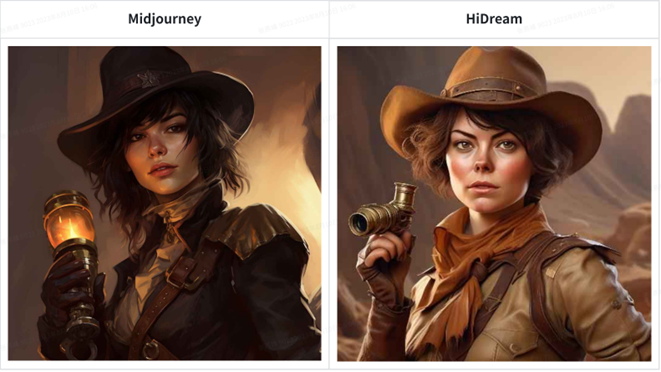
Prompt: Dungeons and dragons character portrait, dark short-haired woman, Wild West tracker holding a brass spyglass, Emma stone, clever, upbeat and witty, and strong
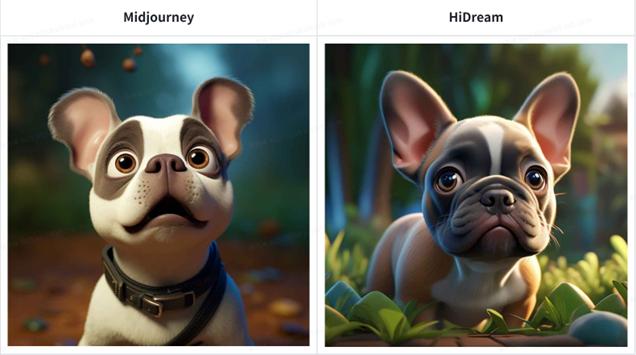
Prompt: A young French Bulldog appears confused after being ambushed, wide-eyed and stunned, Pixar style
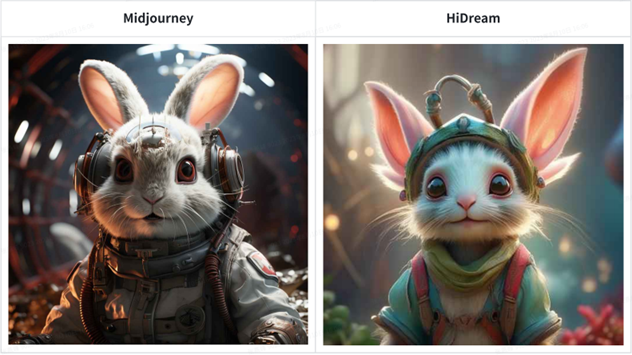
Prompt: Alien looking strange cute happy little bunny
Figures 5-7: Images generated by MidJourney and HiDream using the same prompt
MidJourney has done valuable pioneering work, and if later entrants can better apply the transformer and create stronger model capabilities, no longer simply relying on the Diffusion Model (MJ continuously optimized the current tool based on this model), there should be great potential. We also believe that MJ will use its first-mover advantage to break free from the reliance on the diffusion model and continue to bring surprises to the market.
Whether it is tools, superficial applications, or deep enterprise applications, they are all in the early stages of large-scale generation and hidden currents. AIGC has just begun, and we look forward to the innovation and iteration of algorithms continuously showcasing a more brilliant chapter for the industry.
September 6, 2023, early morning in Hefei.
The author of this article is Xu Siqing, co-founder and CEO of Alpha Community.
免责声明:本文章仅代表作者个人观点,不代表本平台的立场和观点。本文章仅供信息分享,不构成对任何人的任何投资建议。用户与作者之间的任何争议,与本平台无关。如网页中刊载的文章或图片涉及侵权,请提供相关的权利证明和身份证明发送邮件到support@aicoin.com,本平台相关工作人员将会进行核查。




